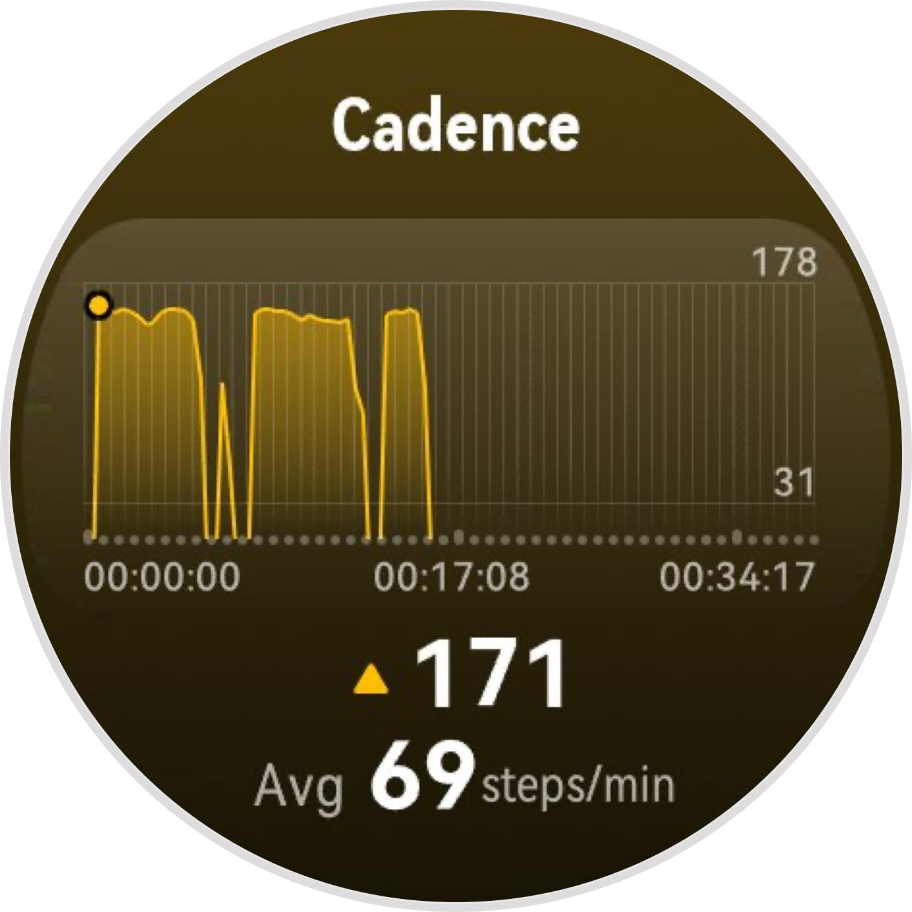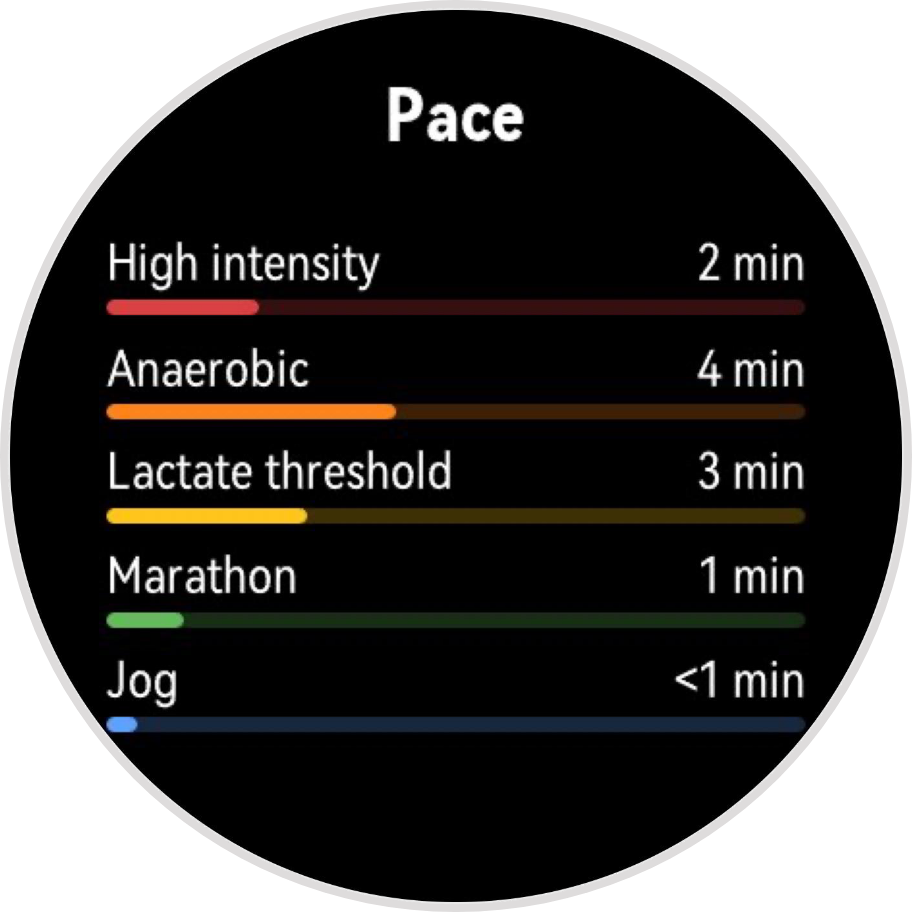Find Your Rhythm, Run Faster: How Cadence Training Makes Running Effortless

Written by Miranda Charlene Coetzee
Find Your Rhythm, Run Faster:
How Cadence Training Makes Running Effortless
6 min readPublished on 24/10/2025 · 11:05
Published on 24/10/2025 · 11:05
01. What Is Running Cadence?
02. Why Cadence Matters
03. How to Measure Your Cadence
04. Finding Your Rhythm
05. How to Train Cadence
06. Common Myths About Cadence
07. The Effortless Flow of Running
What Is Running Cadence?
Running cadence refers to the number of steps you take per minute (SPM). For example, if your left foot hits the ground 80 times in one minute, your cadence is 160 steps per minute (counting both feet).
Most recreational runners fall somewhere between 150–170 SPM, while elite runners often hover around 180+ SPM. While 180 has long been considered the “gold standard,” cadence is highly individual and depends on factors like height, leg length, running experience, and pace.
What actually matters is the rhythm that feels smooth and keeps me healthy. When I lock into my own step rate, the run feels lighter, my form holds together, and I finish with more in the tank.


Up to 21-day battery life
Get new cycling power metrics on your wrist. Train with science
Understand your emotional well-being across dimensions
Iconic look leads the trend
Why Cadence Matters
• Reduces Impact and Injury Risk
A low cadence usually means longer strides, which often leads to overstriding: landing with your foot far in front of your body. This increases impact on your knees, hips, and shins. By slightly increasing cadence, your foot lands more underneath your body, reducing stress and lowering injury risk.
•Improves Running Efficiency
A dialed-in cadence minimizes wasted motion like bouncing up and down. Instead, your energy is directed forward, helping you cover more distance with less effort. Think of cadence as your running rhythm. It’s like a metronome guiding every step.
•Supports Faster Pacing
If you’ve ever felt like speeding up meant sprinting, cadence may be the missing link. A quicker step rate lets you increase pace smoothly without feeling like you’re forcing it.
• Helps Maintain Form When Fatigued
Late in a run, your form often breaks down. A consistent cadence works like a stabilizer, helping you stay tall, relaxed, and efficient even when tired.

How to Measure Your Cadence
Traditionally, measuring cadence required counting your steps or a training with a metronome. Now, smart devices make it effortless. The HUAWEI WATCH GT 6 tracks cadence automatically during your runs and displays it in real time. Afterward, you can review detailed breakdowns in the HUAWEI Health app, which shows:
• Average cadence over the run
• Stride length and pace relationship
• Cadence consistency throughout different segments
This takes out the guesswork, you know exactly where you are and where to improve. During my 200 m sprints my cadence usually climbs well above 200 SPM, because every step has to be explosive and quick. Over 400 m, it’s different: my cadence drops closer to 185–190 SPM. On my HUAWEI WATCH GT 6 I can see the change right away. My step rate spikes on 200 m reps and settles into a steadier rhythm on the 400 m. Seeing that pattern helps me tweak my speed work and dial in my race pacing.

Finding Your Rhythm
The key is not making drastic changes overnight. Research shows that increasing cadence by just 5–10% above your baseline is enough to improve efficiency and reduce impact without feeling unnatural [1].
For example:
• If your cadence is 160 SPM, aim for 168–176.
• If you’re already at 170, try moving toward 178–180.
On my HUAWEI WATCH GT 6 I’ve set real-time cadence alerts, so the watch gently buzzes if my step rate starts to dip. It’s a small nudge, but it keeps me locked into my rhythm and saves me from falling off pace mid-run.

How to Train Cadence
Here are practical strategies you can start using today:
01. Use a Metronome or Music
Match your steps to a beat. HUAWEI Watches integrates seamlessly with music playback, so you can sync your stride to songs with the right BPM. I could not get Spotify onto the watch, but uploading my own tracks was straightforward.
02. Drill with Strides
Short 20–30 second bursts focusing on quick, light turnover help train your body to adapt to higher cadences. Your watch captures these micro-adjustments so you can see progress over time.
03. Focus on Form Cues
Simple mental cues keep you sharp:
•“Quick feet, light steps.”
•“Land under hips.”
•“Run tall, stay relaxed.”
You can even customize training reminders on the Watch to reinforce these cues mid-run.
04. Progress Gradually
Jumping from 160 to 180 SPM in one week is risky. Instead, add 2–4 steps per minute every couple of weeks. The Huawei Health app tracks trends and progression automatically, so you’ll see steady, sustainable improvement.
05. Run by Feel
Numbers guide you, but rhythm sustains you. Once your body adapts, you won’t need to stare at your watch, though it’ll always be there as a quiet coach if you drift off rhythm.

Common Myths About Cadence
Myth 1: Everyone should run at 180 SPM.
Reality: 180 is a guideline, not a rule. Your perfect cadence is individual.
Myth 2: Higher cadence means running faster.
Reality: Cadence helps efficiency, but speed also depends on stride length, strength, and endurance.
Myth 3: It feels unnatural, so it must be wrong.
Reality: Any new skill takes practice. With gradual training (and feedback from your Watch HUAWEI WATCH GT 6), it becomes second nature.

“Cadence training with the HUAWEI WATCH GT 6 is more than a numbers game. It’s about unlocking efficiency, protecting your body, and enjoying the effortless flow of running.”
The Effortless Flow of Running
When cadence clicks, running feels easy. Instead of fighting the ground, I glide forward. My breath syncs with my stride, the body stays relaxed, and the miles fly by.
With the HUAWEI WATCH GT 6 I get there faster. The live cadence readout keeps me on rhythm, the post-run breakdown shows where I drifted, and the gentle cues nudge me back when I fade. Over time that feedback has made easy, efficient running feel like my default.
So next time you lace up your shoes, strap on your HUAWEI WATCH GT 6, and let it guide your stride. Because when you find your rhythm, you don’t just run faster, you run free.

Literature
1. Heiderscheit et al. (2011): Effects of step rate manipulation on joint mechanics during running.

Miranda Charlene Coetzee
Report
Read more
Explore
Copied








